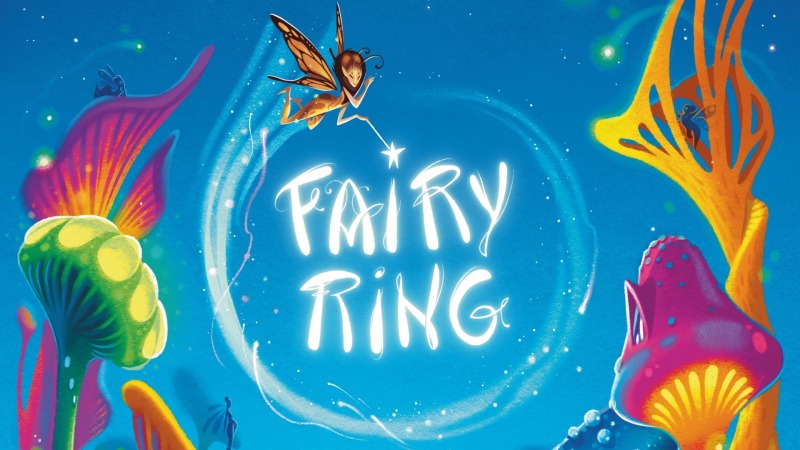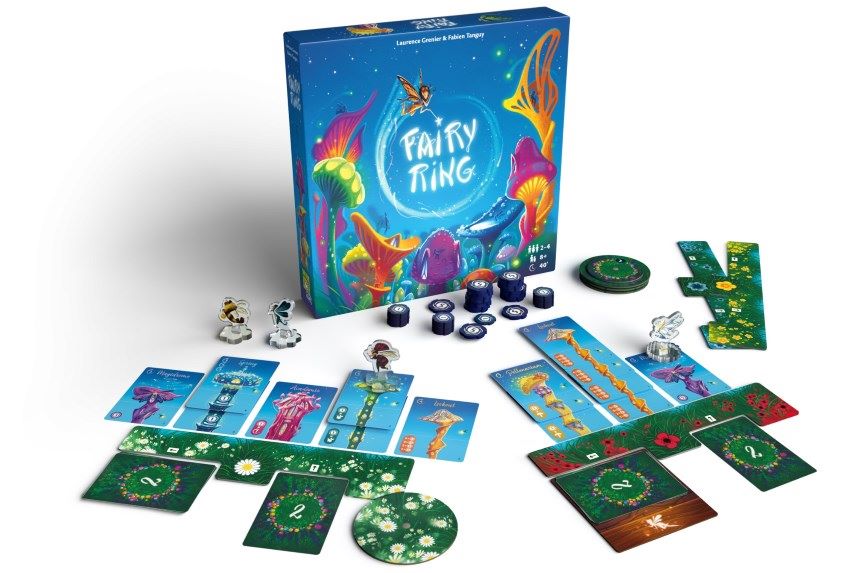Don’t Tiptoe Past the Fairy Ring Board Game

Fairy Ring is a family game, and looks like it might be a game for little kids, but there’s way more going on under the mushroom cap here. The rules themselves are simple, but the way you move your fairy token each turn presents a lovely bit of mental calculation that makes this game both a winner and a way to sneak a little mathing into your kids’ day.
In Fairy Ring, players will create little “villages” of mushroom cards in front of them, stacking cards of the same mushroom type or using them to start new columns, and then move their fairy around the table, through all players’ villages, the number of spaces shown on the card they just played. If your fairy finishes its movement on one of your mushroom columns, you score for it, and no one else gets anything. (Fairies can be selfish little runts.) If it finishes on another player’s mushroom, then they score, and you only score if you have a column of the same type of mushroom in your village. After each turn, players pass all of the cards in their hand to their left—a mechanic known as “card drafting”—and play continues until each player has one card left in their hands, which is discarded. You repeat the process one more time with the second season’s deck, which has more valuable cards of the same mushroom types, and play continues until each player has 12 mushroom cards in their village. Then the game ends and the player with the most points wins, as you may have guessed.
Each mushroom type scores in its own way, of course. The game would be fairly boring otherwise. Feh-ry Ring? (I’ll see myself out.) Mushrooms give you mana, which you collect until you have 20, at which point you can exchange them for one victory point on your dial. Purple mushrooms just score a fixed number of mana points printed on each card. Orange ones score more for the column based on how many cards are in it, from three (for one card) to 24 (for four). Yellow cards give you one mana per mushroom column, not card, in your village. Pinks score mana equal to the number of spaces your fairy moved. And greens score one per visible firefly in your village; some cards have fireflies on them, but they may be obscured when you stack another card on top of them, so it’s often more beneficial to create a new column instead. Blue ‘spring’ mushrooms score differently. If you land on a blue mushroom, no one scores. If you pass over one, however, the owner collects the mana shown on the cards in that column. It’s automatic, like EZ-Pass. Or passive income for the fairy who wants to work from home.
